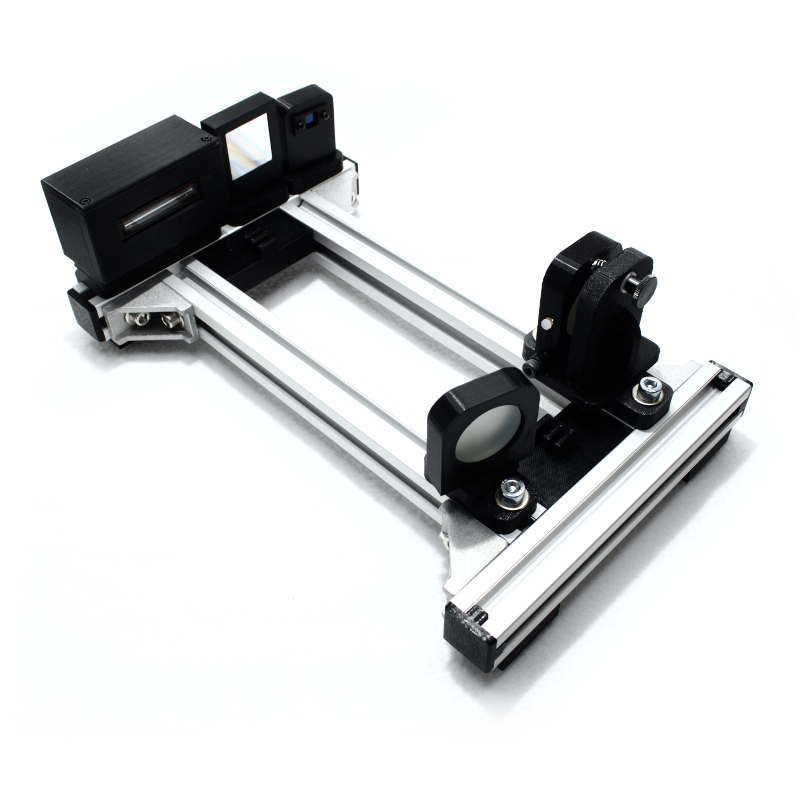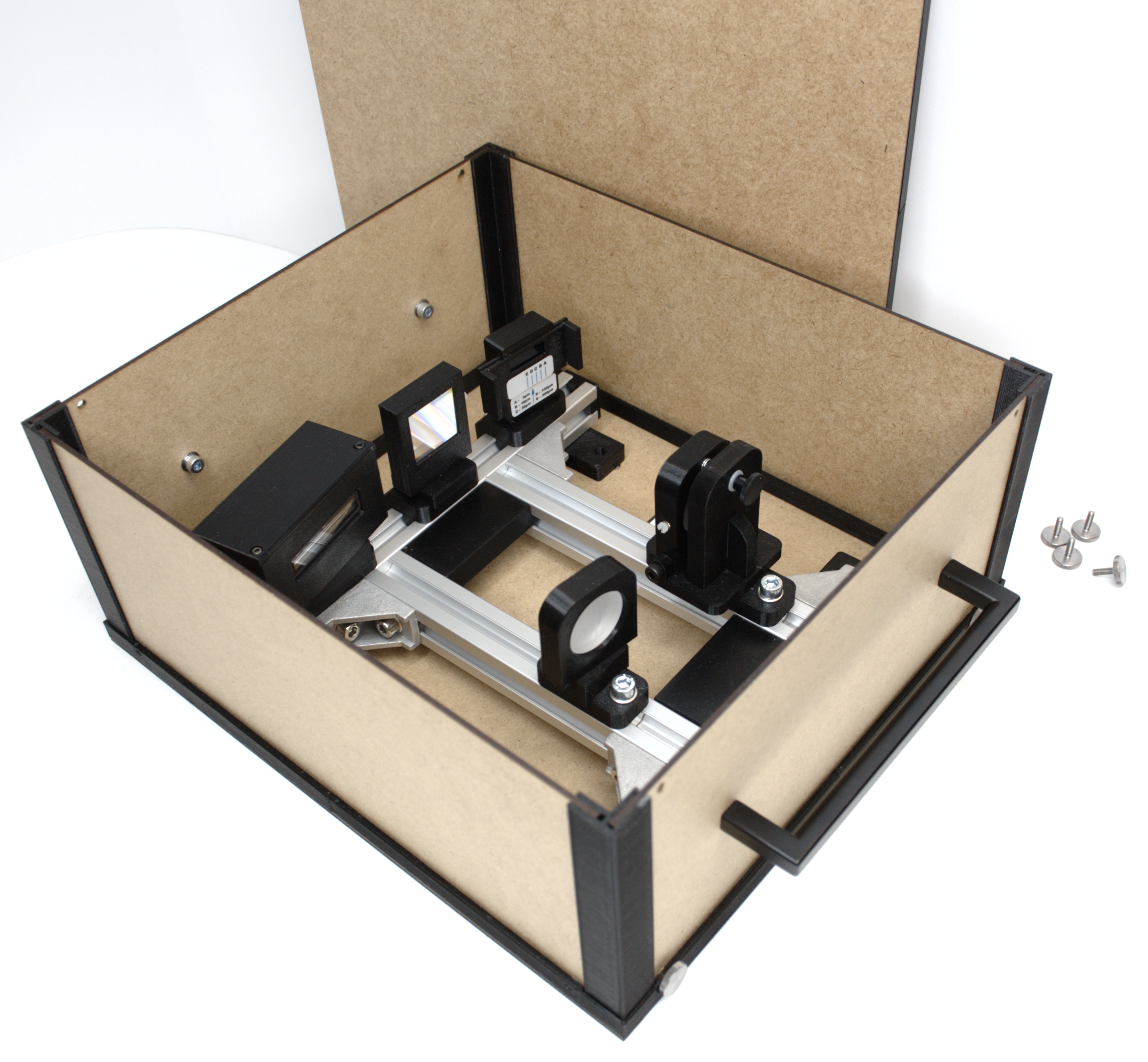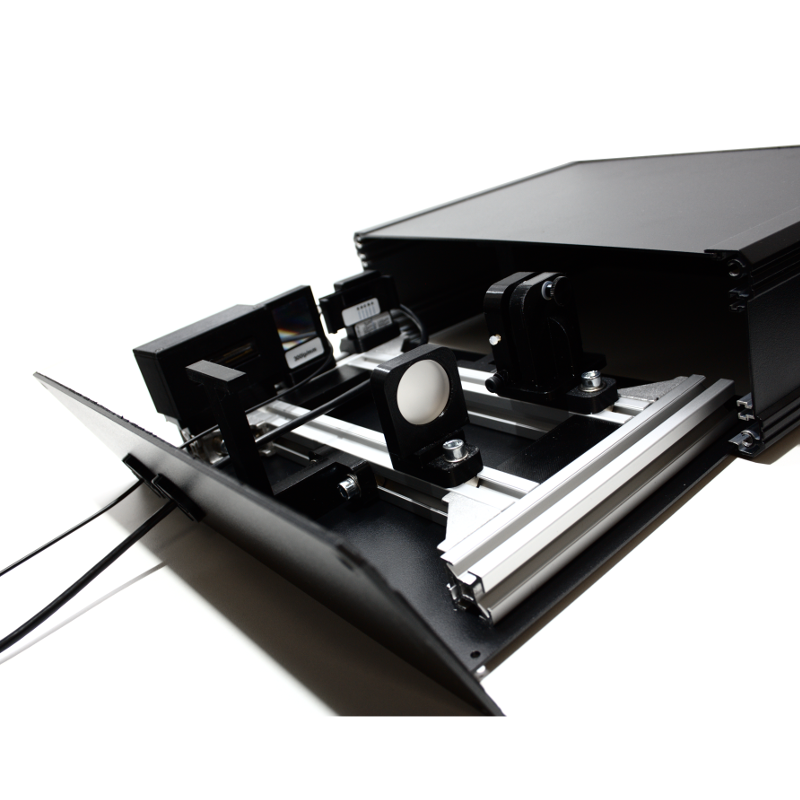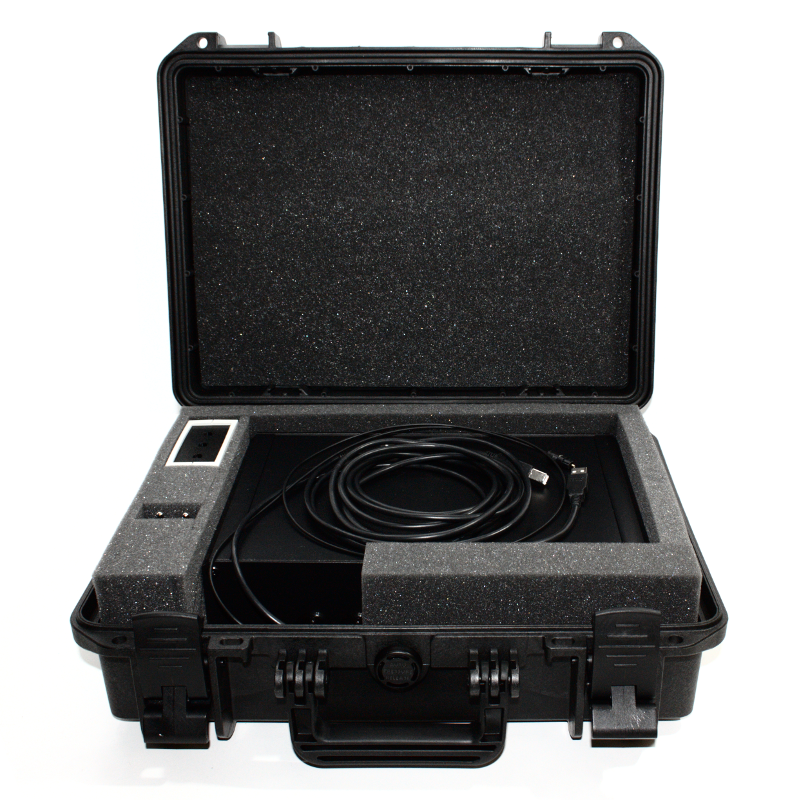


Spectrometers are high-precision measuring instruments for analyzing the spectral composition of light. They allow light to be broken down into its individual wavelength ranges, thereby providing valuable information about materials, chemical compositions, or light sources.
Fields of application range from research and development to industrial quality control and environmental analysis. Typical measured variables are transmission, reflection, and emission spectra—often with the aim of identifying characteristic peaks and determining quantifiable parameters.
Eureca Messtechnik GmbH has been established as a specialist in optoelectronics for many years and has in-depth experience in the development and adaptation of spectrometers. Our expertise includes the precise tuning of optical systems, the integration of modern sensor technology, and the implementation of sophisticated measurement concepts. This enables us to realize both standard solutions and complex, customized systems—always with the goal of ensuring maximum measurement accuracy and reliability.
Our DIY spectrometers combine high-quality measurement technology with ease of use. They are ideal for teaching, research, and citizen science projects and offer a cost-effective way to precisely capture spectra. Thanks to their modular design and easy-to-understand documentation, users can quickly enter the world of spectroscopy—whether for experiments with plant pigments, fluorescence, or light sources.
With our new microspectrometer based on our USB line scan cameras, we are setting new standards in miniaturization. The system uses an integrated embossed grating, covers the spectral range from 380–800 nm, and offers a resolution of 20 nm.
Light is coupled via a fiber optic cable, allowing flexible integration into a wide variety of measurement setups. Ideal for broadband spectra such as light source analysis or fluorescence measurements—initial prototypes are already available, OEM variants on request.
In addition to its compact design, another advantage is its high mechanical and optical stability. Once adjusted, the microspectrometers operate reliably and virtually maintenance-free over long periods of time. This makes them suitable for use in harsh environments where vibrations, temperature fluctuations, or dust may occur.
Eureca Messtechnik GmbH offers not only standard products but also customer-specific OEM developments in the field of spectrometer technology. From dimensioning the beam path to selecting the optimal optical and optoelectronic components to prototype construction—our many years of experience ensure you receive tailor-made solutions for your application.
If you are planning a special measurement task or development project, please do not hesitate to contact us. We will support you with technical feasibility analysis, advise you on system design, and accompany you from the initial idea to a functional prototype. Together, we will find the optimal solution for your application.
On our sample spectra page, you will find a selection of real spectra recorded with our spectrometers. The examples show in a practical way how versatile our systems are—from fluorescence measurements and transmission spectra to emission analyses. This collection provides inspiration for your own experiments and illustrates the capabilities of our DIY and microspectrometers.
Here you can easily ask a question or inquiry about our products:
Last update: 2025-28-08




